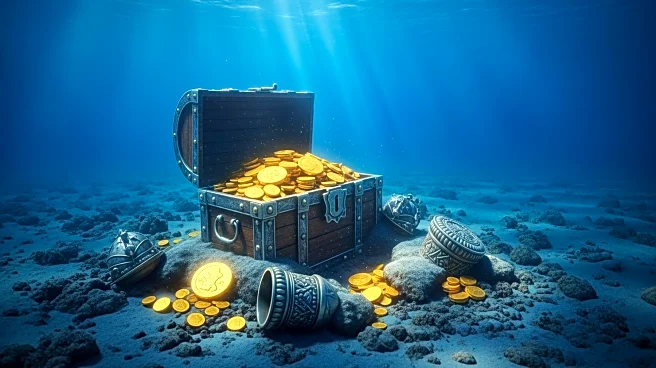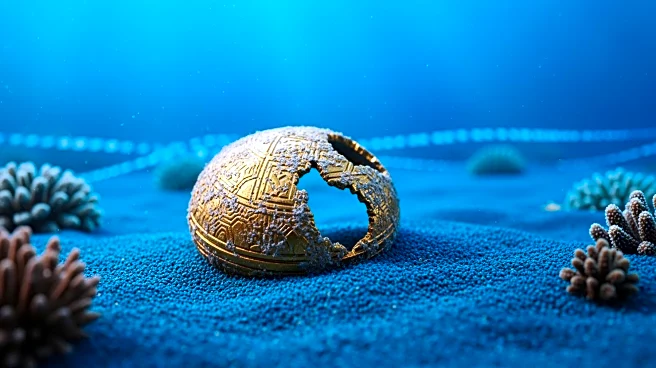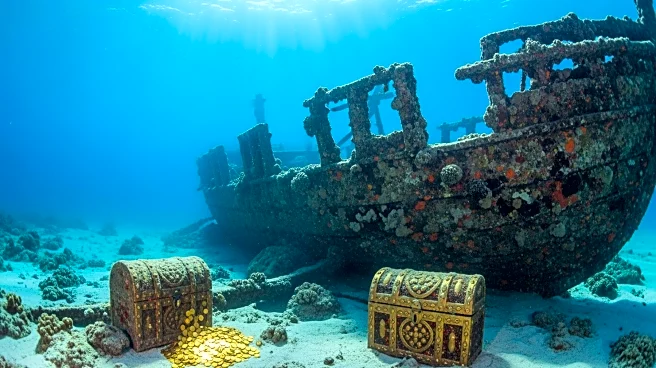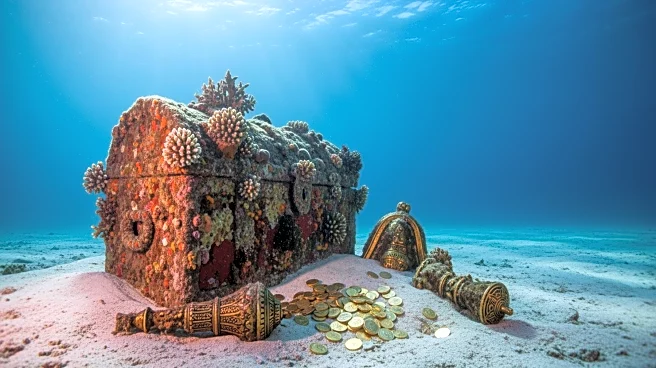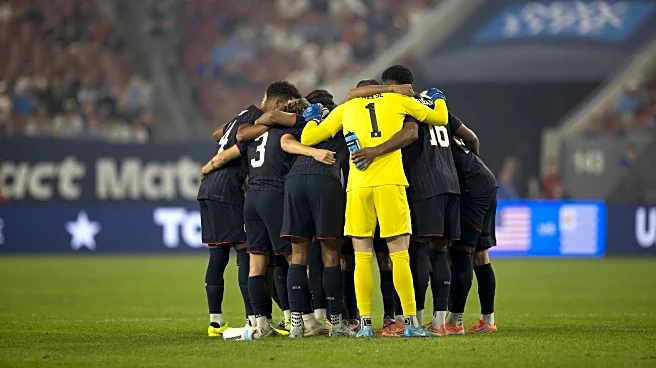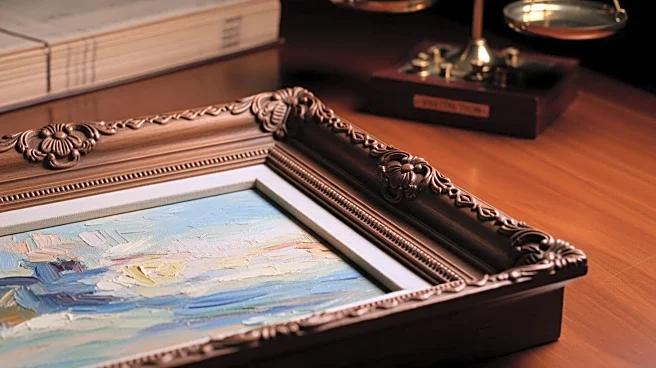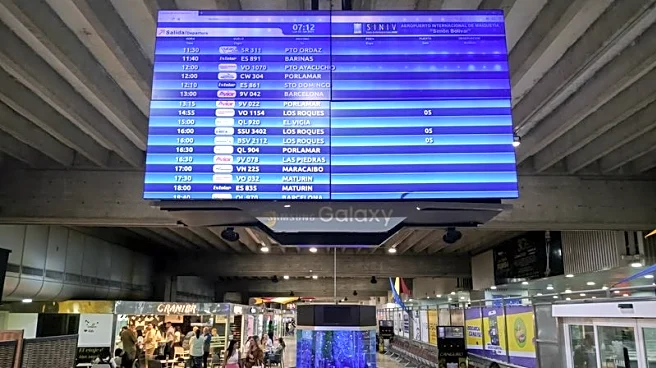What's Happening?
The Colombian government has announced the recovery of a cannon, a porcelain cup, and three coins from the San José shipwreck, a Spanish galleon that sank in 1708 near Cartagena. President Gustavo Petro
was present during the collection of these artifacts aboard Colombian Navy vessels. The San José is considered the Holy Grail of shipwrecks due to its estimated $20 billion worth of gold, jewels, and other goods. The Colombian government has kept the ship's exact location a secret for national security reasons. The recovery is part of an accelerated plan to bring the ship and its contents to the surface.
Why It's Important?
The recovery of artifacts from the San José shipwreck is crucial due to the ship's immense historical and economic value. The galleon is believed to contain billions of dollars worth of treasure, making it a focal point of international interest. The Colombian government's approach to treating the wreck as an archaeological heritage rather than a treasure hunt reflects a shift in cultural preservation priorities. This development could influence future policies on underwater heritage management and international cooperation in archaeological endeavors. The secrecy surrounding the ship's location underscores the challenges in balancing cultural preservation with security concerns.
What's Next?
The Colombian government may continue its efforts to recover more artifacts from the San José, potentially leading to further diplomatic discussions with Spain and other interested parties. The conservation process of the recovered items will provide insights into the ship's historical context and contribute to Colombia's cultural heritage. The ongoing legal disputes over ownership rights could set precedents for future claims on underwater heritage. The government's focus on archaeological heritage may lead to increased international collaboration in preserving historical sites.
